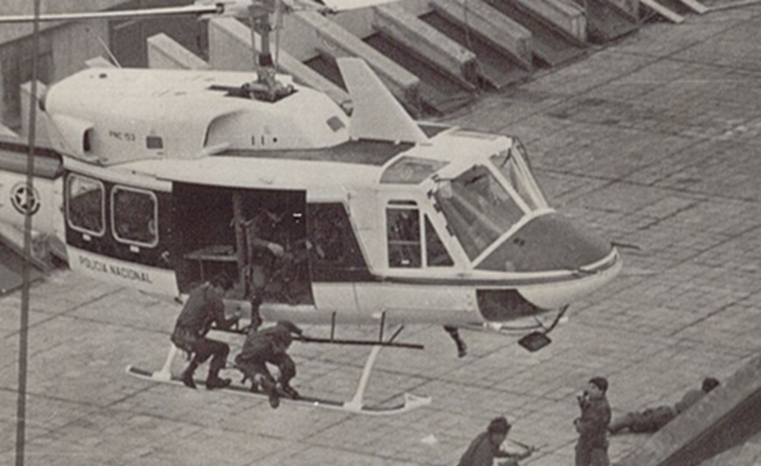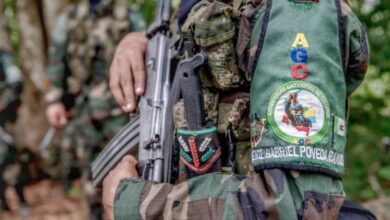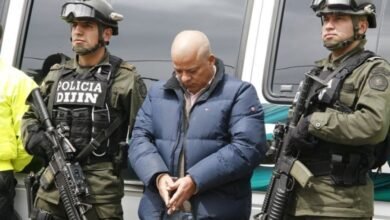Forty Years Later, the Palace Still Burns: Colombia’s Reckoning with Memory

Forty years after the Palace of Justice siege, Colombia is still living in the smoke. The anniversary has turned screens and pages into confessionals, and new films, series, and books are reopening wounds many believed had scarred over. Their message is clear: memory is not an act of nostalgia but of survival, a way to keep the present accountable to its ghosts.
An Anniversary That Refuses to Fade
The Palace of Justice was never just a building in Bogotá. On November 6, 1985, it became a national wound when the M-19 guerrilla stormed the Supreme Court and Council of State, taking dozens of magistrates and staff hostage. The army’s retaking of the building turned the city’s center into a battlefield. By the time the smoke cleared, ninety-four people were dead, including eleven justices. Several victims vanished without a trace, their names still circulating in petitions and court rulings today.
The siege was filmed, debated, distorted, forgotten, and rediscovered—but never resolved. And now, as Colombia marks four decades since that day, the country is watching itself watch its own tragedy.
Anniversaries can invite sentimental amnesia; this one does not. Instead, it has become a mirror. The resurgence of artistic projects around the Palace reveals a collective need not just to mourn but to reclaim the right to interpret. These films and books resist the simplifications of history books and political speeches. They remind Colombians that the Palace is not an artifact locked behind museum glass—it’s a living courtroom, still taking testimony.
Noviembre and the Cinema of a Closed Room
Director Tomás Corredor’s Noviembre, released last month, compresses the siege into a suffocating few square meters: a courthouse lavatory where hostages hid for over twenty-eight hours. The film trades spectacle for claustrophobia. Flickering fluorescent lights and whispered breaths replace explosions. “We decided to tell the story from the inside,” Corredor said. “In that silence, history breathes differently.”
Actors Natalia Reyes and Santiago Alarcón lead a cast that turns survival into choreography—every cough, every heartbeat a negotiation with death. The film’s realism has reignited old debates. The family of magistrate Manuel Gaona Cruz filed a legal action, arguing that the portrayal of the guerrilla’s responsibility on screen contradicts the Truth Commission’s findings. Yet controversy may be Noviembre’s true purpose: to reopen questions the state closed too quickly.
By keeping the camera in a cramped bathroom, the film makes an ethical wager—history must be told at human height. There are no aerial shots, no omniscient narrators, only frightened people calculating how much air is left. It’s a cinema of compression and conscience, a reminder that every statistic once had a face, a breath, a family waiting outside the cordon.

Streaming the Siege and Reclaiming Voices
If Noviembre traps you inside, the upcoming Netflix series Palacio promises to let the voices out. Directed by Jayro Bustamante, Edgar Nito, and Samir Olivares, and fronted again by Natalia Reyes, the series reconstructs the siege through the testimonies of survivors, relatives, soldiers, and former M-19 members. Expected in late 2025, it aims to replace official monologue with collective memory.
Another project, Fragmentos de otra historia, focuses on four women—survivors and relatives who confront the state’s account using recovered footage and personal archives. Director Laura Vera Jaramillo described it as a counter-archive, a way to “rescue the country’s gaze from propaganda.”
These are not isolated efforts. In recent years, films like César Heredia’s Salvador (2021) and Klych López’s Siempreviva (2015) have traced the siege’s human cost: a tailor swallowed by chaos, a missing cafeteria worker named Cristina Guarín, whose remains surfaced decades later in a common grave. On screens large and small, artists are insisting that the Palace is not a date in a textbook—it’s an unfinished story of justice.
Literature’s Forensics and the Politics of Memory
Books have become the slow heartbeat of this anniversary. Ricardo Silva Romero’s Mural reimagines the victims as a mosaic of endurance. David Marín García’s Perdida en el fuego reads like a forensic thriller, reconstructing the twenty-eight hours when Colombia’s highest court became a war zone. And Helena Urán Bidegain, daughter of Justice Carlos Horacio Urán, contributes Deshacer los nudos, an essay-testimony that binds personal grief to civic duty.
In her interview with EFE, Urán said, “Memory is not only a look toward the past, but a way to build a different country.” That line has become the conscience of this commemorative wave. It argues that remembrance is not an act of nostalgia—it’s legislation for the living.
Every page and frame this year shares the same motive: to transform mourning into method. The cultural response refuses to let the Palace of Justice become either a monument or a metaphor. These artists demand a memory that breathes, contradicts, and evolves.
Memory as the Country’s Unfinished Trial
What should Colombians ask of this anniversary? Not consensus, but rigor and empathy. Art cannot sentence the guilty or locate the disappeared, but it can return names that bureaucracies buried. The Palace was a human disaster long before it became a political one, and these new works—on screen, on paper, online—are stitching humanity back into the record.
The challenge for filmmakers and writers is to avoid turning pain into performance, or victims into plot devices. Yet when done with care, art becomes the hearing the country never held. It is a courtroom without walls, where conscience cross-examines silence.
Forty years later, the Palace still burns—less in fire than in unfinished questions. Colombia’s memory is not marble; it’s movement. It demands participation. The siege is over, but the trial that began continues every time a filmmaker opens a script, a daughter writes her father’s name, or a viewer refuses to look away.
Because memory, in Colombia, is not an archive. It’s a verb.
Also Read: U.S.– Colombia Showdown: Petro, Trump, and the High‑Risk Politics of Bravado




